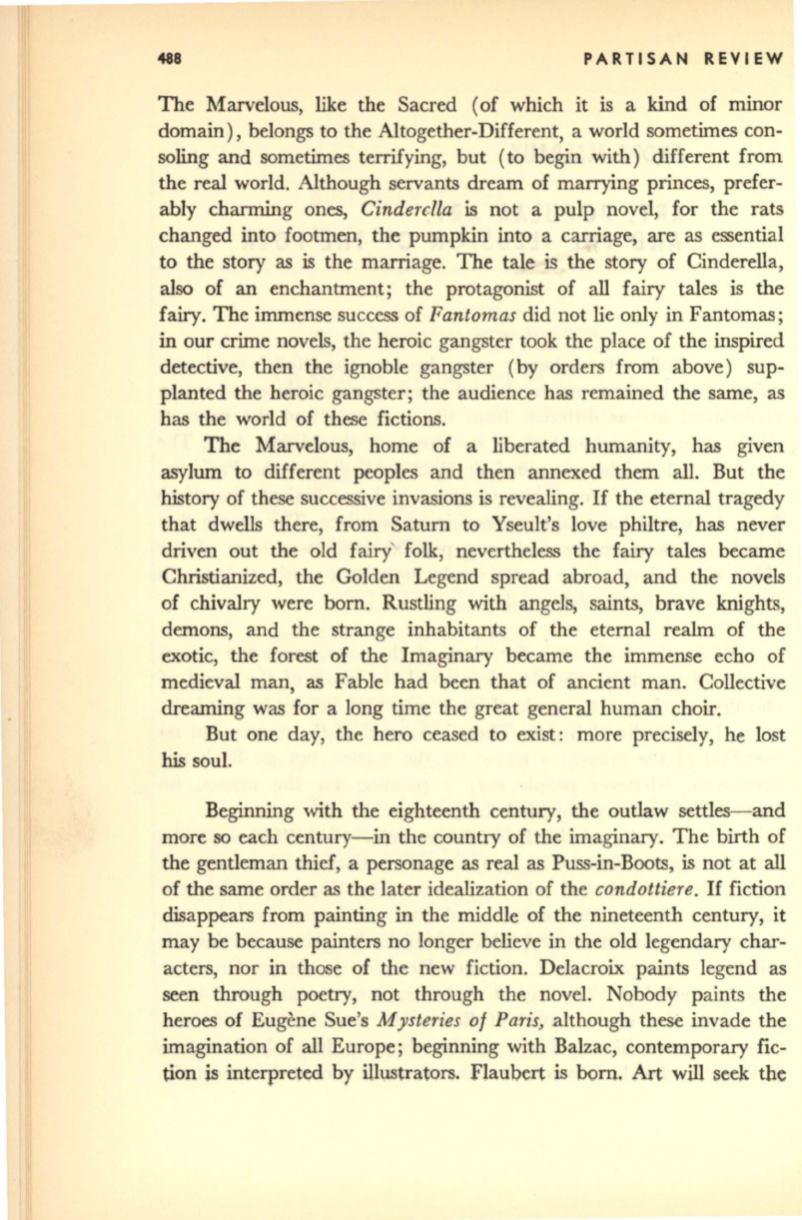
488
PARTISAN REVIEW
The Marvelous, like the Sacred (of which it is a kind of minor
domain), belongs to the Altogether-Different, a world sometimes con–
soling and sometimes terrifying, but (to begin with) different from
the real world. Although servants dream of marrying princes, prefer–
ably charming ones,
Cinderella
is not a pulp novel, for the rats
changed into footmen, the pumpkin into a carriage, are as essential
to the story as is the marriage. The tale is the story of Cinderella,
also of an enchantment; the protagonist of
all
fairy tales is the
fairy. The immense success of
Fantomas
did not lie only in Fantomas;
in our crime novels, the heroic gangster took the place of the inspired
detective, then the ignoble gangster (by orders from above) sup–
planted the heroic gangster; the audience has remained the same, as
has the world of these fictions.
The Marvelous, home of a liberated humanity, has given
asylum to different peoples and then annexed them all. But the
history of these successive invasions is revealing.
If
the eternal tragedy
that dwells there, from Saturn to Yseult's love philtre, has never
driven out the old fairy' folk, nevertheless the fairy tales became
Christianized, the Golden Legend spread abroad, and the novels
of chivalry were born. Rustling with angels, saints, brave knights,
demons, and the strange inhabitants of the eternal realm of the
exotic, the forest of the Imaginary became the immense echo of
medieval man, as Fable had been that of ancient man. Collective
dreaming was for a long time the great general human choir.
But one day, the hero ceased to exist: more precisely, he lost
his soul.
Beginning with the eighteenth century, the outlaw settles-and
more so each century-in the country of the imaginary. The birth of
the gentleman thief, a personage as real as Puss-in-Boots, is not at all
of the same order as the later idealization of the
condottiere.
If
fiction
disappears from painting in the middle of the nineteenth century, it
may be because painters no longer believe in the old legendary char–
acters, nor in those of the new fiction. Delacroix paints legend as
seen through poetry, not through the novel. Nobody paints the
heroes of Eugene Sue's
Mysteries of Paris,
although these invade the
imagination of all Europe; beginning with Balzac, contemporary fic–
tion
is
interpreted by ill\lStrators. Flaub.ert is born. Art will seek the


